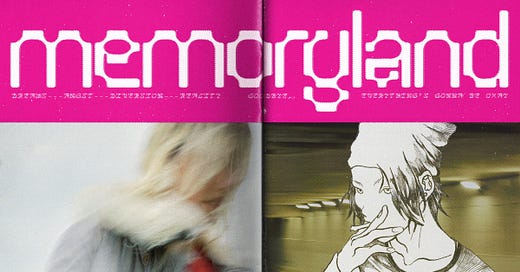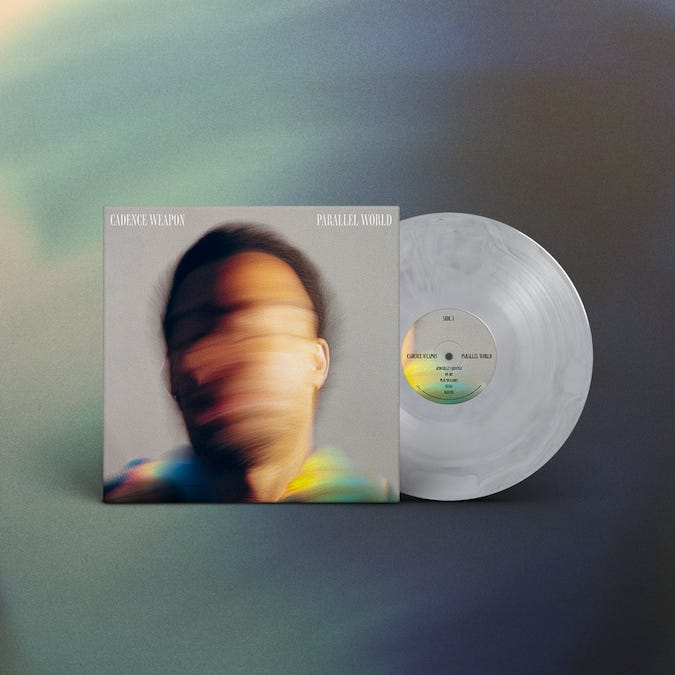The evocative power of memory can be one of the great joys of living. Old shirts become loaded with personal meaning over time. Certain smells and tastes can take you back, rendering deep, specific emotions out of thin air. But in the digital age, the structure of our collective memory has been permanently altered. Tech companies have made it their business to merge the past with the present, purposefully mashing history into an amorphous ball of clay that can be leveraged into ad space.
One thing in our lives that has largely escaped this flattening is music. Music is a personalized time travel platform where your specific experience is impossible to assimilate or replicate. No company would make up the scenario where I mentally associate The Legend of Zelda: Ocarina of Time with Jay-Z’s Vol. 2… Hard Knock Life but I first enjoyed them together and that neural link can never be removed. Your ‘90s isn’t going to be my ‘90s so that catch-all compilation or playlist isn’t gonna hit either of us in the same way.
The ‘90s that Montréal electronic producer Mike Silver aka CFCF eulogizes on his remarkable new album memoryland is a reasonable simulacrum of a nineties that I remember fondly but largely only personally experienced as a distant observer. It’s the ‘90s of The Face Magazine, the apex of the supermodel era and Lollapalooza’s 1995 lineup where Sonic Youth shared the stage with Moby. The album art and visuals draw from a dizzying array of archival ‘90s fashion advertisements. He openly cites his sonic and cultural references in the album’s liner notes. His dedication to the conceptual, aesthetic side of this project is truly inspiring. Shout out to art director Ben Sifel, photographers Jodi Heartz and Alex Blouin and illustrator Daylen Seu for the amazingly cohesive visual experience they created around this record:


The nineties followed the vast suburbanization that changed the face of North America in the fifties, sixties, seventies and eighties. This was the era when a generation grew up in prefab communities without their own history. Suburban youths were forced to examine the idea of the city primarily through pop culture, experiencing it as an abstract idea rather than a physical place. memoryland’s frenzied approach matches that same distant, curatorial view of the ‘90s as a grab bag of stylistic pleasures.
Memory is fragmentary and so is memoryland. The references are there and they are clear but if you blink, you might miss them. You can hear clipped samples from Aphex Twin’s “Girl/Boy Song” at the beginning of “End — Curve of Forgetting.” “Model Castings” featuring No Joy is like a cross between “Windowlicker” and Deftones’s “Change (In the House of Flies).” Initially, “Self Service 1999” appears to be a spot-on reproduction of Discovery-era Daft Punk but is probably more specifically a nod to Cassius’s remix of “Cassius 1999.” Elsewhere I hear Madonna circa “Ray Of Light,” Craig David, Everything But The Girl circa Walking Wounded and Temperamental, Paul Oakenfold, Underworld’s Beaucoup Fish, Richie Hawtin. Yet despite all of these references, the album never once comes off as unoriginal.



memoryland is less like an iPod on shuffle and more like swapping discs in and out of a CD wallet. It isn’t so much about the sheer number of callbacks as it is about the totality of each individual reference. When Silver tries a style, he doesn’t go halfway. His reproductions are faithful to the extreme, mimicking production tricks in a way that only the obsessively dedicated would even attempt. More than an archival exercise, it’s also a technical marvel and a labour of love. The album is like a misremembered greatest hits compilation.
Back in the ‘90s, subcultures thrived. They were regional and often largely divorced from commerce. They were only platformed into the mainstream if they held promise of selling products. If not, they just existed on the periphery of culture, inspiring thousands of kids along the way. The ‘90s were a great decade for genre cross-pollination, where different styles of music rubbed up against each other organically and scenes were formed out of the friction. Back then, the subculture made the happy accidents and the mainstream industry was forced to play catch up and reactively find a way to profit from it. CFCF’s memoryland is a tribute to what happened in-between, a celebration of that ever-quickening period of limbo before art gets fully subsumed by commerce.
Pre-order memoryland by CFCF on vinyl at Juno Records and Redeye Records or get it digitally on Bandcamp, Apple Music or Spotify.
Updated the playlist a few times over the last couple weeks. It’s been a really fun exercise to load this thing with the tracks I’ve been resonating with lately. Having something like this has been a great outlet for the music I find when I “go for a dig.”
Parallel World is out in two weeks! You can pre-save it now so it’ll appear in the library of your chosen streaming platform on April 30. Click here to pre-order the album on silver mirror vinyl 💿
You can find Cadence Weapon on Twitter, Instagram, Spotify, Twitch and Bandcamp.







An article that makes me feel nostalgic for an era I was too young to remember. Fantastic article.
I feel lucky to be old enough to catch both the references laced in the record and the context you've tucked in this article. Thanks.